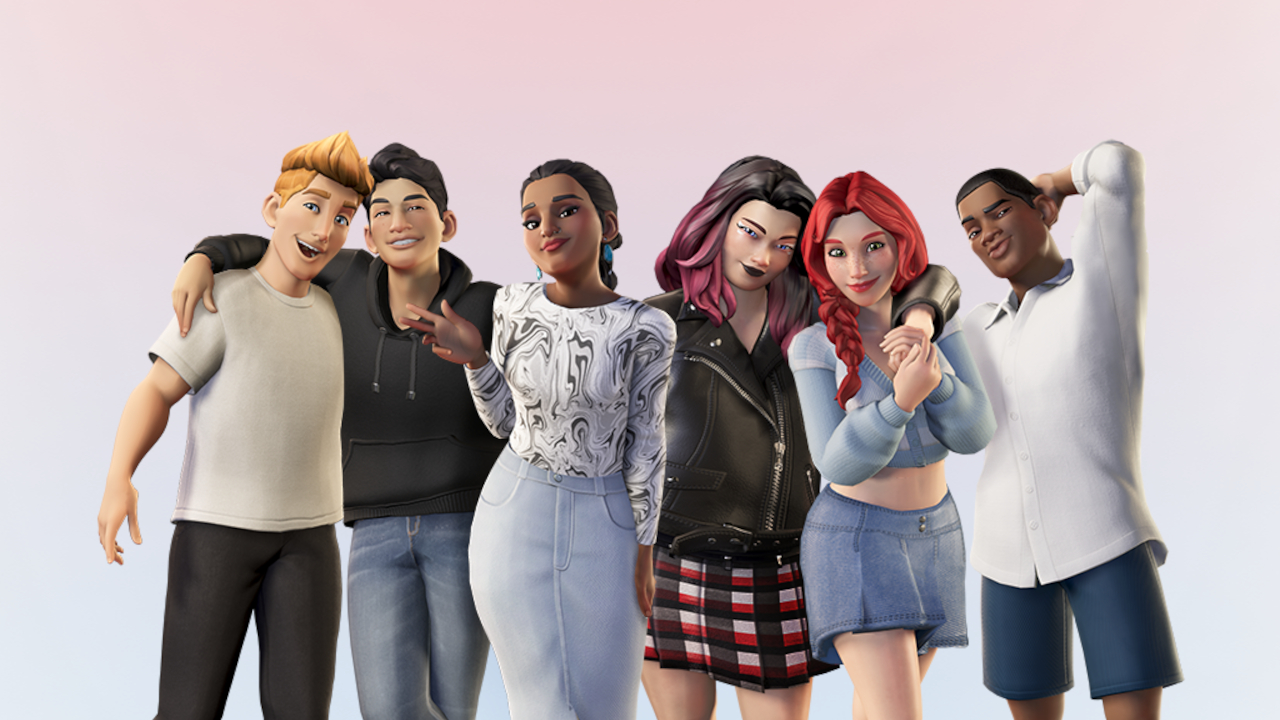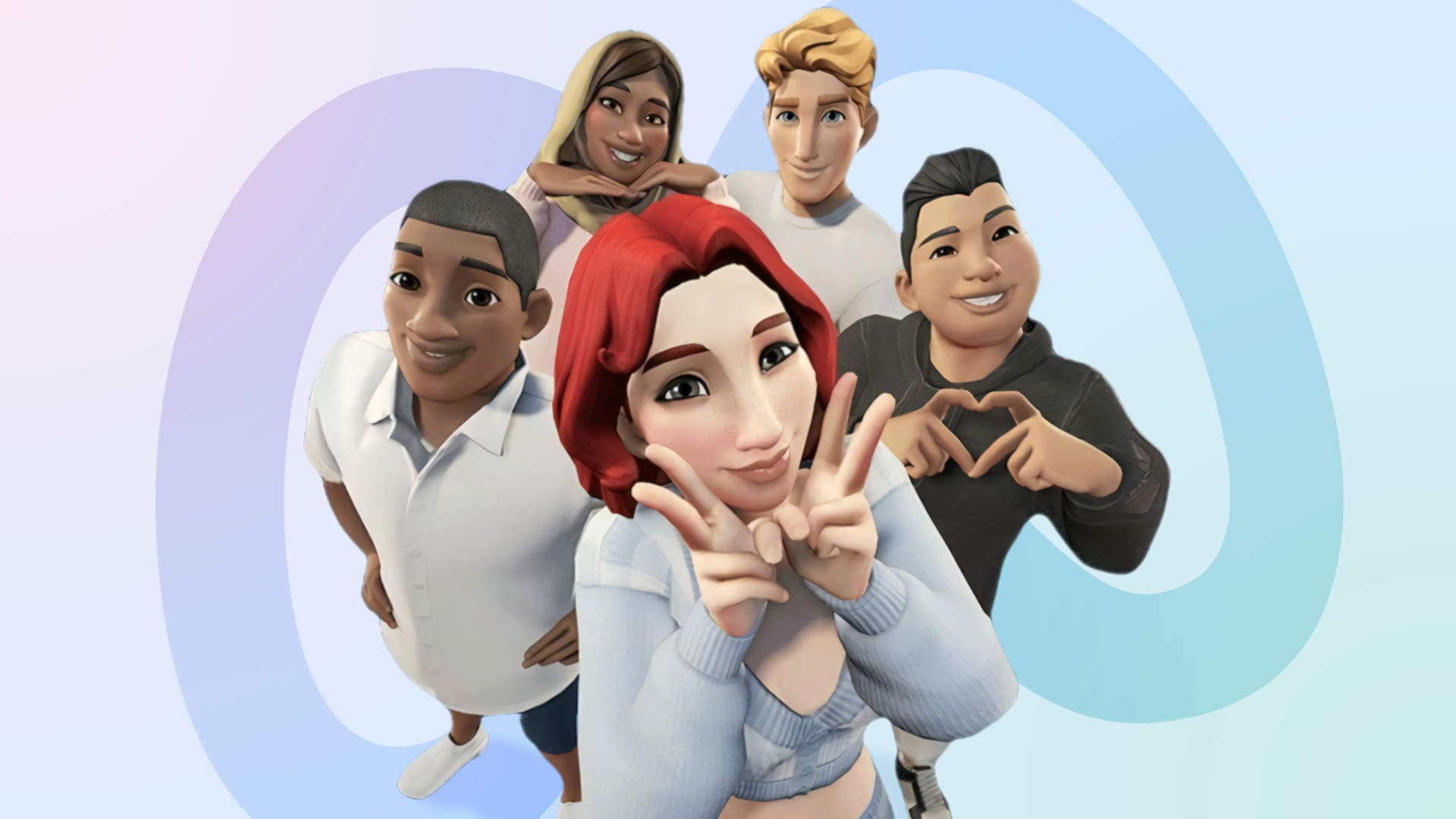New Meta Quest update adds a digital 'You' worth returning to
Horizon OS avatars get a metaverse remodeling

Following last week's impressive Connect event, Meta is wasting no time in bringing many of its newly announced features and products to market.
While we still have to wait until October 15 for the Meta Quest 3S to release, today the platform that powers Meta's Quest headsets receives an impressive release of its own: a major overhaul of Horizon OS avatars.
However, this is more than a simple visual update. It's an opportunity for Meta to captivate its audience further and press on for the kind of AR/VR user retention it has often lacked in the past.
Believing that Meta's avatars could play a vital role in the platform's social and community growth, a former Meta artist tells Laptop Mag, "It's essential that users are able to feel a genuine connection with their digital alter-egos."
A digital 'You' worth returning to
Meta might have the biggest market share for VR headset ownership thanks to the incredibly popular Meta Quest 2, but according to an internal Reality Labs presentation from February 2023, user retention and engagement is one of the company's primary struggles.
We need to be better at growth and retention an resurrection.
Mark Rabkin, Meta President for VR
During the presentation, Meta's president for VR Mark Rabkin revealed, "Right now, we're on our third year of Quest 2, and sadly, the newer cohorts that are coming in, the people who bought it this last Christmas, they're just not as into it [as the ones who bought it early]." Rabkin stressed, "We need to be better at growth and retention and resurrection."
At the time, Rabkin pushed for easier content sharing to other platforms and a more dynamic way for developers to promote their content within the Quest Store. However, other ways of improving retention have come from Meta, including a bigger push to bring AAA titles and franchises to Horizon OS, and an upcoming fresh new look for the Horizon OS UI.
Stay in the know with Laptop Mag
Get our in-depth reviews, helpful tips, great deals, and the biggest news stories delivered to your inbox.
The new avatar update is another method, giving users more of a connection with their digital avatar and those of others.

New Horizon OS avatars: A metaverse remodelling
When discussing the potential impact of Meta's new avatar system, Todd Taylor tells Laptop Mag, "Expanding customization options for meta VR Avatars is clearly an effective way to drive personalization and foster stronger emotional connections between users and their digital identities."
Expanding customization options for meta VR Avatars is clearly an effective way to drive personalization and foster stronger emotional connections between users and their digital identities.
Todd Taylor, Genies
Todd Taylor is a Principal Technical Artist for Genies, whose avatars have featured in everything from Times Square billboards to Decentraland concerts, award show performances, and the social media profiles of popular musicians.
Taylor has 25 years of experience specializing in 3D digital characters, seven of which were spent working at Oculus/Meta where he contributed to the platform's avatar system and SDK.
Talking more about the newly-released avatar update, Taylor continues, "Meta's new VR avatars show a significant improvement in their overall appeal, striking that elusive balance between realism and a stylized aesthetic that resonates with users."
Commenting on Meta's new stylized figures, which offer increased animation possibilities, improved facial animations, and greater ability to express, Taylor tells Laptop Mag "Taking a step towards realistic proportions while staying true to a stylized look, the new avatars resemble the quality of Disney animated characters or the iconic avatars in Fortnite.
The evolution of Meta's avatars is rooted in creating more relatable and visually engaging digital personas.
Todd Taylor, Genies
"Art directing customizable characters is a major challenge, especially when users have a wide range of personalization options, but Meta's new avatars demonstrate a thoughtful approach to this complexity."
Meta's new avatars offer a much more diverse array of body types, skin colors, apparel, face, eye, and nose shapes to name just a few of the changes, and this is something that Taylor believes will aid Meta's goals and benefit the Quest community.
"Meta continues to focus on appealing to a diverse user base across its various apps, creating avatars that are versatile enough to resonate with a broad demographic while offering robust customization.
The evolution of Meta's avatars is rooted in creating more relatable and visually engaging digital personas."
Looks can kill, or thrill: Why avatars matter
Avatars in gaming have had their occasional moments to shine. However, on most platforms, they feel somewhat abandoned.
While Xbox avatars of past generations would feature in games like the surprisingly fun Doritos Crash Course or A World of Keflings, and other titles would offer unique rewards for achievement progression, they're now little more than profile dressing.
Some platforms excelled at avatar adoption, particularly the Nintendo Wii, where Miis were used to represent players, often featuring in many of the platform's games and greatly adding to the immersion of mixing motion controls with on-screen results.

Similarly, Meta's avatars seek to add a deeper sense of immersion to activities and social interactions. However, while this new avatar update could aid Meta greatly in improving the social and community aspects of the Horizon platform, it's not without its risks.
Todd Taylor tells Laptop Mag, "For Meta VR avatars to gain widespread adoption, it's essential that users are able to feel a genuine connection with their digital alter-egos. If an avatar doesn't reflect how users want to present themselves, or if they are unhappy with its appearance, they are unlikely to engage with it on an emotional level."
For Meta VR avatars to gain widespread adoption, it's essential that users are able to feel a genuine connection with their digital alter-egos
Todd Taylor, Genies
Thankfully, the new avatar update is quite extensive, offering a much more detailed and expansive suite of options to fine-tune and customize your metaverse appearance. Everything from hairstyles to clothing colors and body customization has been given a fresh lick of paint. However, Taylor suggests that even this has its downsides.
"While extensive customization can be fun and powerful, giving users too much freedom with control over physical form can potentially be a liability that results in avatars that feel 'off' in terms of art style or lose overall appeal. They might just look bad.
"For example, the more levers and dials available to fine-tune features of the face, the closer the process becomes to the actual art of sculpting." At which point I feel Taylor personally attacks every custom RPG character I've ever made as he tells Laptop Mag, "Not all users have the discerning eye of an artist."
Outlook
Luckily for Meta, the new avatar system does have its limits. This isn't exactly on the level of Dragon's Dogma 2 or Soul Calibur V, but still versatile enough to produce some very effective recreations of yourself in Meta's 3D animated form.
The new avatars are also met with a new SDK (software development kit) that will allow developers to take full advantage of the enhanced movement, animation, and emotive capabilities of Meta's avatars, and make full use of them in VR/AR games and apps.
What appears on the surface to be a cosmetic enhancement could actually have a big impact on keeping Quest users tuned in to Meta's VR worlds, and greatly add to immersion in titles that feature them thanks to more fluid movement and human-like proportions. It's an exciting update, and we're looking forward to seeing Meta's new avatars put to further use.
If you're a Quest user and you want to check out Meta's new avatar system, be sure to head to your profile and update your avatar from today. Not within reach of your headset right now? You can also update and customize your avatar within the Meta Horizon app on iOS and Android.
More from Laptop Mag

Rael Hornby, potentially influenced by far too many LucasArts titles at an early age, once thought he’d grow up to be a mighty pirate. However, after several interventions with close friends and family members, you’re now much more likely to see his name attached to the bylines of tech articles. While not maintaining a double life as an aspiring writer by day and indie game dev by night, you’ll find him sat in a corner somewhere muttering to himself about microtransactions or hunting down promising indie games on Twitter.
